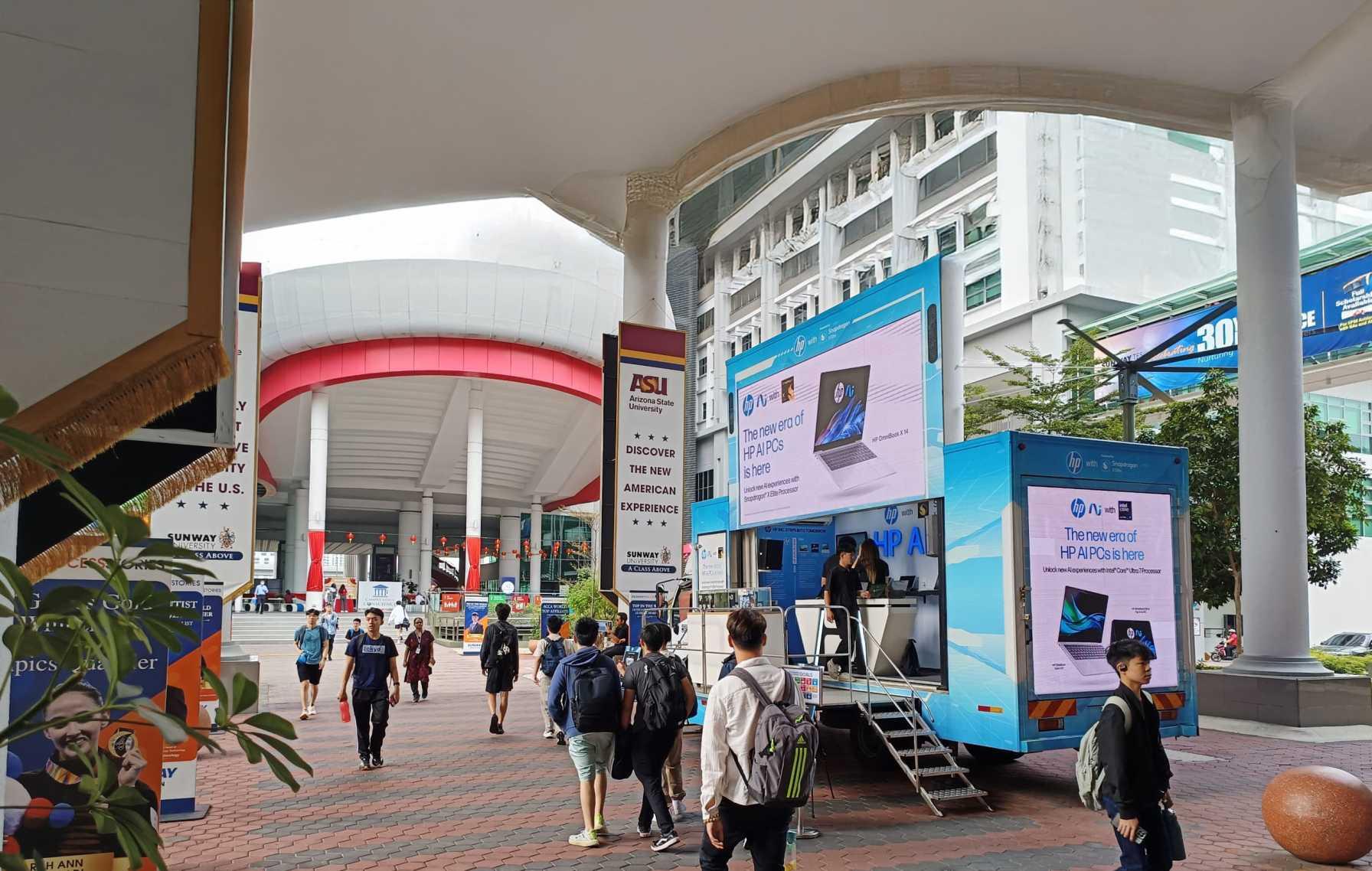Gesponsert
The Evolution of LED Screens: From Simple Displays to Interactive Experiences

Over the past few decades, the LED screen has evolved from a basic lighting technology into one of the most advanced tools for digital communication and visual storytelling. From simple monochrome signs on shopfronts to high-definition video walls and interactive public installations, LED screens have completely transformed how businesses, organizations, and even governments communicate with people.
This evolution didn’t happen overnight. It’s a story of innovation, engineering breakthroughs, and changing human expectations for how we interact with visual media. Today, the LED screen is not just a display—it’s an experience.
The Humble Beginnings: Early LED Displays
The origins of LED technology date back to the early 1960s, when scientists first discovered that semiconductors could emit light. Early LEDs were used mainly for indicator lights on electronic devices, calculators, and digital clocks.
By the late 1980s and early 1990s, engineers began experimenting with LED displays for public signage. These early screens were simple—often limited to red or green colors—and were used for text-based information like “OPEN” signs, fuel prices, or transportation updates.
At that time, LEDs were valued primarily for their energy efficiency and durability. They consumed less power than incandescent bulbs and could operate for tens of thousands of hours without replacement. However, they lacked the brightness, color range, and resolution needed for dynamic visuals.
Even so, these early innovations laid the foundation for what would become a multi-billion-dollar global display industry.
The Rise of Full-Colour LED Screens
The next big leap came in the late 1990s and early 2000s with the development of RGB (Red, Green, Blue) LED technology. This advancement allowed LEDs to produce a full spectrum of colors by mixing the three primary hues.
With RGB technology, LED screens could now display videos, animations, and high-quality graphics—a massive improvement from simple text-based visuals. Businesses quickly recognized the potential. Stadiums, concerts, and advertising agencies began adopting full-color LED billboards to captivate audiences.
These first-generation color screens were the beginning of digital outdoor advertising as we know it today. For the first time, brands could display moving content, schedule multiple ads, and change visuals instantly—something impossible with traditional print media.
SMD and COB Technology: A New Level of Clarity
As the LED industry matured, two major breakthroughs—SMD (Surface-Mounted Device) and COB (Chip-on-Board)—redefined screen quality and versatility.
-
SMD LED screens integrated red, green, and blue diodes into a single small package, improving color uniformity and allowing for tighter pixel arrangements. This meant higher resolutions, better contrast, and a smoother image even at close viewing distances.
-
COB technology, on the other hand, eliminated the need for individual LED packaging by mounting multiple chips directly onto the circuit board. The result was enhanced durability, better heat dissipation, and ultra-fine pixel quality.
These innovations opened the door for indoor LED applications such as shopping malls, corporate offices, churches, control rooms, and broadcast studios—places that required sharper images and minimal viewing distance.
The LED screen was no longer just for large outdoor displays—it became a tool for immersive, high-definition indoor communication.
LED Screens Go Smart: Integration and Control Systems
As software and digital infrastructure evolved, so did LED technology. Modern LED screens are now integrated with smart control systems that allow users to manage content remotely.
Cloud-based platforms enable users to schedule, update, and monitor multiple screens from a single dashboard. This feature has revolutionized industries like advertising, transportation, and retail, where real-time information and dynamic content are essential.
For instance:
-
A retailer can instantly update promotional visuals across multiple stores.
-
A transport hub can display live departure times.
-
A digital billboard network can synchronize ads nationwide—all within seconds.
This digital connectivity has turned LED screens into a powerful communication ecosystem, not just a display surface.
The Emergence of Fine-Pitch and MicroLED Displays
One of the most remarkable technological leaps in recent years is the introduction of fine-pitch and microLED displays.
Fine-pitch LEDs (typically with pixel pitches below 2.0mm) offer ultra-high resolution for close-range viewing. They are now widely used for indoor video walls, boardrooms, and virtual production studios.
MicroLED technology goes even further—it features microscopic LEDs that deliver brighter light, deeper blacks, and superior color precision without the need for backlighting. This innovation is quickly becoming the next frontier in the LED screen industry, competing directly with OLED in terms of image quality.
For industries such as broadcasting, film production, and corporate events, microLED represents the ultimate balance between visual perfection and energy efficiency.
Interactive LED Screens: The Next Frontier
The latest evolution in LED technology is interactivity. Modern LED screens can now respond to touch, motion, sound, or even audience data.
Interactive LED walls are being used in:
-
Retail stores, where customers can browse virtual catalogs or customize products on-screen.
-
Museums, where visitors engage with digital exhibits.
-
Events and concerts, where LED screens respond to crowd movement or music beats.
This shift transforms the LED screen from a passive display into an active participant in the user experience. As augmented reality (AR) and artificial intelligence (AI) continue to advance, future LED displays may even personalize content based on who’s watching.
Industry Transformations Powered by LED Screens
The impact of LED technology can be seen across nearly every industry. Here’s how different sectors have benefited from the evolution of the LED screen:
-
Advertising: Digital billboards dominate cityscapes, offering dynamic, eye-catching campaigns that can be changed instantly.
-
Events and Entertainment: Concerts, sports, and festivals now rely on massive LED walls for live visuals, branding, and immersive experiences.
-
Retail: LED screens create engaging storefronts, interactive shopping experiences, and modern in-store promotions.
-
Corporate and Education: Businesses and institutions use LED video walls for conferences, lectures, and data visualization.
-
Transportation: Airports, train stations, and highways use LED screens for real-time updates and safety messaging.
-
Public Spaces: Government agencies deploy LED displays for public information, safety campaigns, and community announcements.
No matter the sector, the LED screen has become a symbol of innovation, engagement, and adaptability.
Sustainability and Energy Efficiency
Beyond visual performance, today’s LED technology is also leading the charge toward sustainability. Modern LED screens consume significantly less energy than traditional LCD or projection systems. Manufacturers are also developing recyclable materials and energy-saving power drivers to reduce environmental impact.
As global industries push toward carbon neutrality, the LED screen stands out as a green technology that aligns with environmental goals while enhancing communication efficiency.
The Future of LED Technology
The evolution of LED screens is far from over. In the near future, we can expect breakthroughs such as:
-
Flexible and transparent LED screens that can wrap around objects or blend into glass walls.
-
Holographic LED displays that project lifelike 3D visuals without special glasses.
-
AI-powered LED systems that adapt brightness, color, and content automatically based on environment and audience.
These innovations will continue to blur the line between digital and physical reality—turning every LED screen into an interactive, intelligent, and sustainable storytelling platform.
Conclusion: From Display to Experience
What began as a simple light-emitting diode has evolved into one of the most versatile technologies of the digital age. The LED screen has journeyed from basic signage to immersive, interactive experiences that captivate audiences across every industry.
As technology continues to evolve, LED displays will only become smarter, sharper, and more engaging—bridging the gap between imagination and reality.
In the years ahead, the LED screen won’t just show information—it will create experiences, connecting people to brands, stories, and ideas in ways we’ve never seen before.






